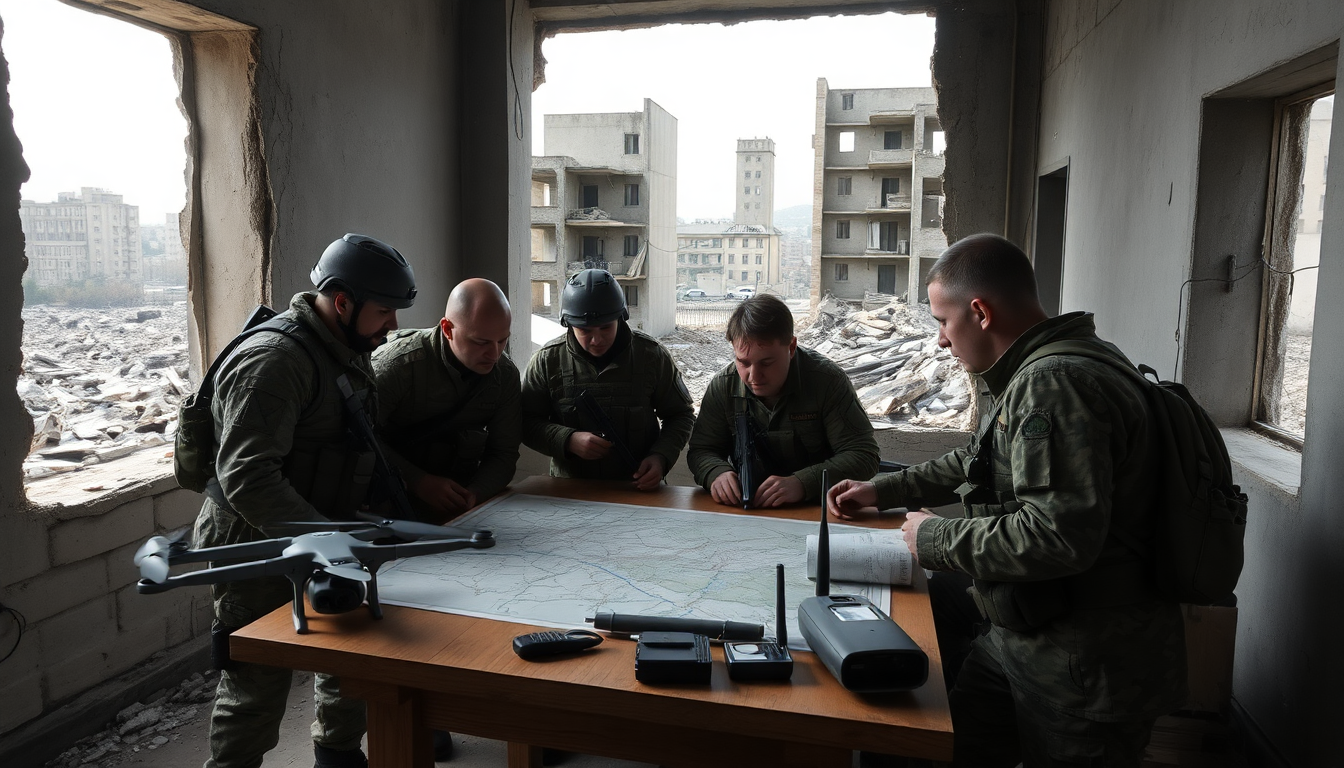Table of Contents
As military tactics evolve, Ukraine finds itself in a constant struggle to adapt its defense strategies to the changing dynamics of the battlefield. With Russia shifting from large-scale assaults to smaller, more agile units backed by drones, Ukraine is rethinking its approach to fortifications. In this article, we’ll dive into the current situation, the changes underway, and the challenges the Ukrainian military is grappling with.
Adapting to New Military Tactics
Recent changes in Russian military tactics have prompted Ukraine to take a hard look at its defensive strategies. Ukrainian Defense Minister Rustem Umerov has pointed out that the Russian military is moving away from traditional, extensive formation attacks. Instead, they’re relying on smaller units supported by cutting-edge drone technology. This shift means Ukraine must adapt its fortifications, designing them not for battalion-sized groups but for much smaller ones.
The new strategy focuses on building fortifications that cater to units as small as platoons, which typically consist of just 20 to 50 soldiers. Ukrainian Army Commander Oleksandr Syrskyi emphasized that today’s most effective defensive positions are limited to a single detachment. They’re utilizing compact trench systems that remain hidden from aerial reconnaissance. By scaling down the size of fortifications, Ukraine aims to create covert positions that are harder for enemy drones to spot. But is this enough to withstand the evolving threat?
While this adaptive approach shows a proactive mindset, execution on the front lines has been a mixed bag. Reports suggest that the quality of fortifications varies significantly depending on local command decisions. This inconsistency creates a chaotic defensive landscape, with some areas well-fortified and others alarmingly vulnerable. How can a military effectively defend itself when its very foundation is shaky?
Challenges in Fortification and Resource Allocation
Despite the push to strengthen defenses, Ukraine’s military is facing serious challenges, particularly due to a chronic shortage of personnel. Syrskyi has made it clear: even the strongest fortifications won’t hold without enough troops to back them up. The disparity in troop numbers along the extensive 1,200-kilometer front line further complicates matters, as Russian forces are actively looking for weak points to exploit. Can Ukraine afford to leave any gap unguarded?
Moreover, the responsibility for building and maintaining these fortifications is fragmented among various entities—the Armed Forces, the State Special Transport Service, and local administrations all play a role. This division of labor leads to inconsistent fortification quality and a lack of strategic alignment. Analysts and soldiers on the frontline have criticized this disjointed approach, arguing it undermines the overall effectiveness of Ukraine’s defenses. What might be the cost of this lack of coordination?
As the situation continues to evolve, the need for timely and effective fortification has never been more urgent. The Ukrainian government has allocated substantial funds for constructing defensive positions, yet many soldiers express frustration over delays and mismanagement. They feel that the time gained during military engagements could be better utilized to reinforce the border area. How can they ensure every moment counts?
Looking Ahead: Strategies for Improvement
To boost the effectiveness of its defenses, Ukraine must streamline its fortification processes and ensure that all units are adequately manned. Increased coordination among the various military and governmental entities involved in defense is crucial to creating a cohesive and responsive strategy. Are there lessons to be learned from other nations that have faced similar battles?
As the battlefield landscape remains fluid, continuous evaluation of fortification efficacy is key. Umerov’s assertion that fortifications must adapt to enemy tactics underscores the importance of an agile approach in military engineering. By adopting a more strategic and focused methodology, Ukraine can better prepare its defenses against the ongoing threat from Russian forces. What innovative strategies might help turn the tide?
In conclusion, the ongoing conflict demands not just a reevaluation of military tactics but also an urgent call for a more unified and efficient approach to fortification. As Ukraine faces these challenges head-on, the resilience and adaptability of its military will undoubtedly play a crucial role in shaping the outcome of this protracted conflict. How will history remember their efforts?


